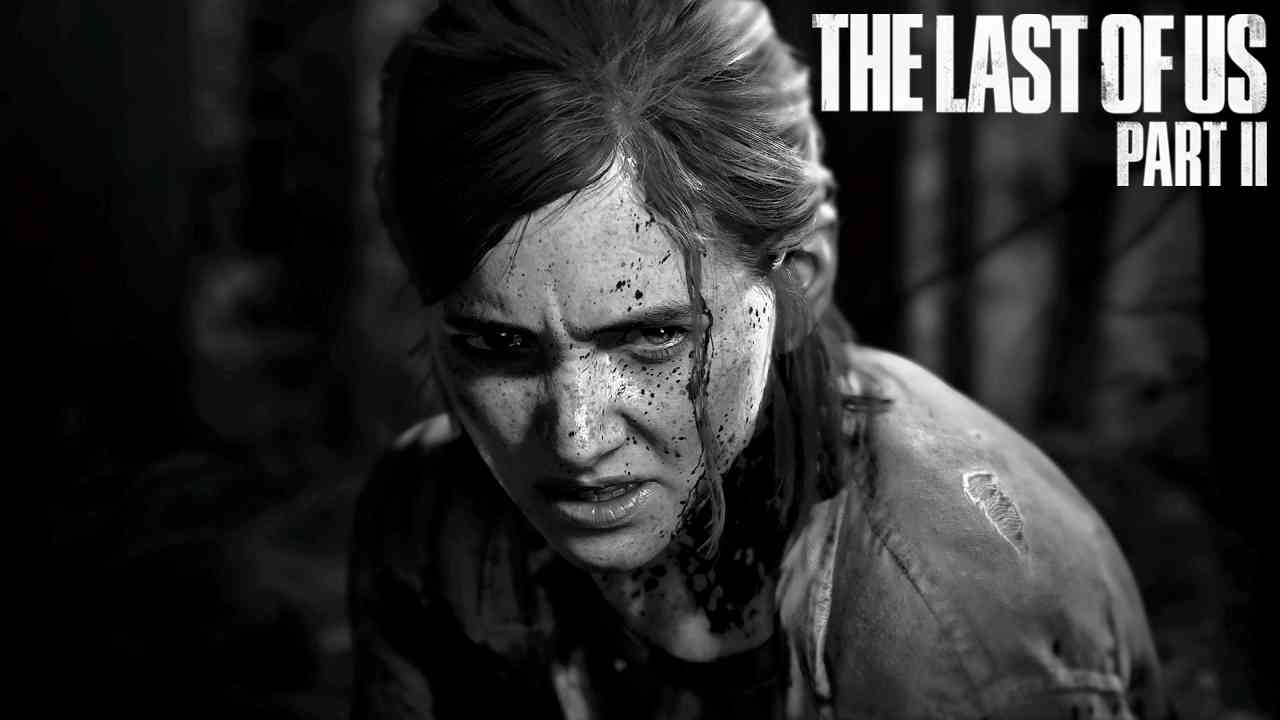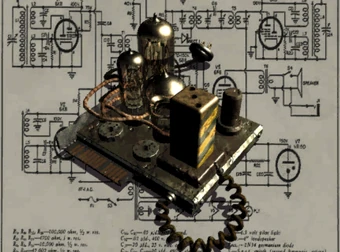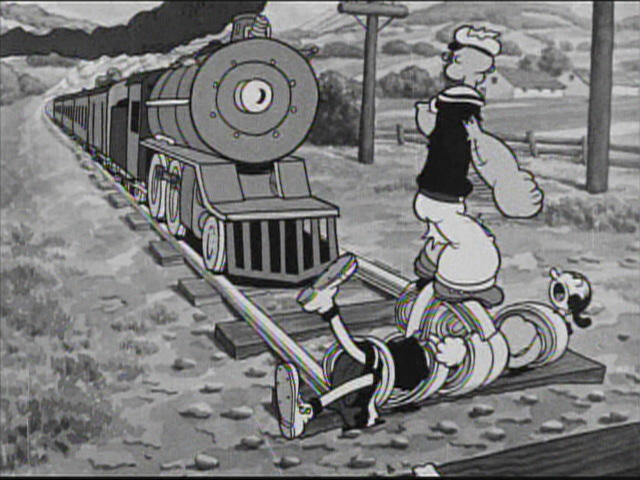The Last of Us Part 2 is out and it’s proving to be highly divisive. One of the main themes of the game is revenge and having seen the first 10 hours or so of the game I felt inspired to write an article exploring the issue of character vs player motivation in open world games.
This article is not a review of the The Last of Us Part 2 but it might contain SLIGHT SPOILERS.

I’ve been spending a lot of time recently working on narrative design for my own upcoming game: SKALD: Against the Black Priory. One of the questions I’ve been pondering is: How do you align the motivations of the player with the motivations of the player’s in-game character in open-world games?

Using revenge stories as an example: They are dramatic, visceral and cathartic and often highly appealing. Their use in games, however, comes with some challenges that might not be evident from their use in other media. While the main-character might be out for blood, the player would much rather collect junk.
Melodramatic Motivation
For many types of games (but certainly not all), it is expected that the game’s in-game main character (the avatar) comes with their own motivation. For the narrative experience to be appealing, the player should:
- Understand the character’s motivation and goals
- Empathize with the character’s motivation and goals
- Actively share the character’s motivation and goals
Additionally, the player’s motivation should also not conflict with the
character’s motivation and goals.
From the list above you can see that the points are in increasing order of importance: It’s probably better if we could make a game where the player not only understands and empathizes with character’s motivation, but also feels like their own motivation overlaps with the character’s.
A revenge quest (or revenge story) is a common trope in fiction. From the Iliad to Kill Bill, these stories feature protagonists who are driven by an urge to get revenge (often violently) against the antagonist for some trauma that has been inflicted upon them.

For these stories to be effective, the triggering (traumatic) event often comes with enough of an emotional impact that the player/viewer/reader shares in the protagonist’s desire for cathartic revenge.
Looking at our three points from above, it’s not difficult to see why it’s so popular to have characters with motivation born out of some trauma: It is highly universal and offers us (melo-) dramatic narratives where we understand, empathize with and share the motivation and goals of the protagonist.
Does this mean that revenge-quests and similar stories are ideal for games? As always the answers is not yes or no, but rather it comes down to understanding the consequences of our design choices.
A Simple Model of Motivation
A common and simple psychological model for describing motivation it that of intrinsic vs extrinsic motivation. It is commonly used in fields such as management, education and sports and, though it might seem a bit simplistic, it readily provides some interesting insights.

Extrisinc Motivation
Simply put, when we perform tasks and actions to gain some external reward or avoid punishment we experience external motivation.
Going to work because you want to get payed is a classical example of this.
Intrinsic Motivation
Intrinsic motivation on the other hand is what we experience when we perform a task because we find it personally rewarding. In other words: performing an activity for its own sake rather than the desire for some external reward.
Doing your job because you enjoy the work itself (as opposed to doing it just to get payed) is a typical example of intrinsic motivation.
The In-Game Context
Motivation is complex (as is all human behavior) and it’s not really possible to describe it in terms of absolutes. Within the framework of extrinsic vs intrinsic motivation it is rare that we are 100% on one end or another of the scale. For example, when we say that we are extrinsically motivated, what we really mean is probably that we are mostly extrinsically motivated.
Tasks such as playing games can be highly complex since they often consist of so many sub-tasks. This means that our motivation for each of those tasks may vary greatly; I’m intrinsically motivated to play most games since I enjoy the act of gaming for its own sake. However, within that context, I would say my motivation to collect 10 wolf-pelts is mostly extrinsic as this will get me rewards (gold and XP).
The wolf-pelt example is not random: It’s safe to say that games with open worlds (such as roleplaying games and open-world shooters) often contain tasks where we might feel primarily extrinsically motivated. We might do “chores” because they rewards us in the long run. Compare this to a racing game where the reward loop is so compressed that we feel instant gratification throughout the entire play experience.
In occupational psychology, intrinsic motivation is often held up as being preferable. This comes from research that shows that individuals with a high degree of intrinsic motivation perform better than those with a high degree of extrinsic motivation.
For this discussion however, I think we should be careful to automatically place intrinsic motivation above extrinsic motivation. This is especially true for roleplaying- or open-world games where the reward-loops are wide enough that they contain tasks that might feel like chores but where the sum of the experience nonetheless is a fun play-experience.
To put it in another way: It’s certainly not a failure of design if your game contains sub-tasks that causes the player to experience both kinds of motivation within the context of the game. If that makes for a good game, players will feel intrinsically motivated to interact with it.
Player vs Character Motivation
Lets try to apply some of the theory we’ve discussed so far.
Character Motivation
In the kinds of games we are discussing today players are typically either:
a) provided with an establish character (Ellie, Geralt of Rivia, Super Mario etc) that comes fleshed out both in terms of appearance, personality and backstory.
or…
b) provided a blank character that has some backstory attached to it (such as in certain RPGs where we get to create fresh characters but with the baggage of being “the dragon born” or something in that vein).
In both cases, the game almost always provides a motivation for the character: a raison d’etre for the character’s adventuring career. In the kinds of narratives we are interested in today, this motivation is often highly intrinsic and triggered by some dramatic event.
Importantly: The more dramatic the triggering event – the more highly motivated it is implied that the game’s character will be.
Player Motivation
Consider the Last of Us Part 2. We play most of the game as Ellie. Motivated by a burning desire for revenge, she sets out on an epic quest across the gorgeous ruined landscapes of post-apocalyptic Seattle.
It is pretty clear that the character of Ellie is written to be heavily internally motivated. She is not interested in gold or getting new loot; she just has a burning desire for revenge.
And for anyone who plays the game, her motivation and goal easily checks all of our three boxes:
- We understand her motivation and goals
- We empathize with her motivation and goals
- We actively share her motivation and goals – we ALSO want the catharsis of revenge.

As the game moves past it’s intro, it’s hard not to partake in Ellie’s thirst for blood. The character’s motivation and the player’s motivation is alligned!
However, something happens a few hours into the game: The game world opens up. It turns out exploring the post-apocalypse is both fun and interesting. Roaming around whilst listening to the small-talk between Ellie and her travelling companion interspersed by bursts of intense action is fun. So fun in fact that it’s easy to forget why you are out there in the first place.
Let’s look at a classic RPG that I always found had a similar issue: Baldur’s Gate 2.

The first part of the game has the following quest: Imoen, a recurring character from the first game and your step sister, is kidnapped and a large part of the first game is dedicated to you gathering enough gold to rescue her.
At face value, the trope of having to rescue a loved-one in danger is certainly dramatic and universal enough that we should ideally have no problem in sharing the character’s intrinsic motivation.

Baldur’s Gate 2 is one of the best RPGs ever made. However, the first part of the game is often consider the best part of the game; with a huge and interesting game world full of cool quests and awesome characters. Many players will forget Imoen by the time they leave the city gates and they’ll put off rescuing her for as long as they can.
The Point
Using melodramatic core narratives might imbue the character with a lot of strong intrinsic motivation and the player should ideally have no problem sharing that motivation. However, the disconnect occurs once we supply the player with a game-world which is so large and appealing that the player will feel much more motivated to explore it rather resolve the games core conflict. In other words, on one hand the game is telling you to care about Ellie getting revenge (or rescuing Imoen or killing Alduin or finding a new waterchip). On the other hand it’s giving the player a world full of distractions.

To put it in another way: The game design is causing our motivation for the trivial tasks of exploration to eclipse our motivation for resolving the main-character’s grand conflict.
This is an example of a disconnect between the game’s narrative and mechanics. In other words, what we call ludonarrative dissonance.
Potential Solutions
First of all, I’m not saying you should not use highly intrinsically motivated characters as avatars in open-world games. As I said in the beginning, I’m only trying to outline some potential challenges and solutions.
I’m certainly not claiming I cracked this nut with SKALD as the game is still in development. However, I have thought about it a lot, and I’ve chose to adopt a fairly defensive posture to the problem. Here are seven of the main takeaways that I’m currently using to inform SKALD’s narrative design:
1) Good Narrative design is important
This is a no-brainer and I’m not going to belabor it beyond saying: If you’re making a narrative-heavy game of any sort you need to respect the amount of work that goes into narrative design. Don’t let the narrative take a back-seat to mechanics. Ideally: Get a narrative designer!
2) Don’t fight human nature
I’ll repeat what I said in my last article on testing in RPGs: Don’t fight human nature. If you find yourself frustrated that people are playing your game “wrong”, you’ve probably designed your game wrong.
Don’t fall into the pit-trap of trying to sanction or punish unwanted behavior. Instead try figure out why players act the way they do. Players aren’t failing to connect with your narrative because they are simpletons!
3) BE careful with DIALing up the drama
At first glance, one way of dealing with a miss-match between player and character motivations could be to turn up the level of drama and increase the stakes. Surely that will make the player care?
The pit-fall here is that in open-world games there should be room for the player to keep ignoring the core conflict. No matter how high we make the stakes for the character, if we’re not willing to punish the player for ignoring the core conflict (and I don’t think you should), we risk a greater feeling of dissonance as we try to force the player to share the characters intrinsic motivation.
If we ARE willing to railroad the player we aren’t really making an open world anymore (and that might be fine?).
Increasing intrinsic motivation is not a question of telling someone to be more motivated. This is however an article in itself so I recommend you look elsewhere for more literature on this.
4) Don’t presume interest
Personally, this is the point that set me free: Accept that the player’s motivation might not equal the characters motivation.
That is to say: You should design your game and narrative towards this goal but it is dangerous to count on it.
You may very well try to communicate that the game really wants you to care about the character’s core conflict but what if the player simply chooses not to engage? Are they playing the game wrong?
Whenever I write out story-beats in my game I always ask myself “how can we advance the narrative at this point without breaking immersion if the character does not engage ?”
5) Try to identify what is motivating the player at each point in the game
A good way of looping the player in at each point in the game is to ask yourself (through analysis, experience and testing) what’s motivating the player at each point in the game? Is it collecting loot? Resolving sub-quests? Seeing if you can kill all NPCs in the game? Then, ask yourself what should ideally be motivating the character at that point?
You may find ways of aligning those motivations. Is you game-design causing players to become very interested in loot? Place some cool items along your main plot-line and overtly allow the player to express that they’re “in it for the money”.
But be careful: This might not work if your core premise is that the character is out for revenge against the dragon who ate their grandmother! How do you rationalize the player spending hours looting village homes instead of seeking revenge?
6) Don’t have the characters motivation compete with the players motivation
I try to make sure that the player does not need to choose between exploring the world and furthering the plot. Players are often very willing to suspend their disbelief and act “out of character” and then return to acting in-character. The problem arises if the game keeps reminding them that they are acting out of character.
This means that the core narrative should wait for the player and do so gracefully!
A typical failure to do this is when a game presents an urgent crisis and then asks the player to drop whatever they are doing and run off to resolve it. Comically the game will then wait indefinitely for the player who is free to ignore the whole deal.

7) “Opt-In” Motivation
As I’ve said, you shouldn’t take your player’s interest in the main character’s core conflict for granted. However what you might find, is that as the game progresses and the players get to stretch their legs, the player and character motivation may begin to converge. Plan for this and try to make it as seamless as possible.
I honestly think Skyrim does a pretty good job of this – especially in the early part of the game. The game does not assume the player will be interested in the main quest-line. It feels just as natural to just wander of for hours to explore. But more importantly: Once you do choose to engage, it doesn’t really feel immersion-breaking that you “opted” back in.
:max_bytes(150000):strip_icc()/skyrim-5817bb325f9b581c0bb8d64f-cfc4775e8cf24e219481a9c23aea98d3.jpg)
In Closing
This post became a bit longer than I planned. I hope it still makes sense at this point.
As a solo game-developer, it helps me a lot to write stuff like this out and have you guys give feedback. So if you have comments, ideas or differing perspectives I would love to hear them!
Feel free to look me up on Twitter or join the SKALD Discord “game development” sub-channel to discuss the subject in more depth!
